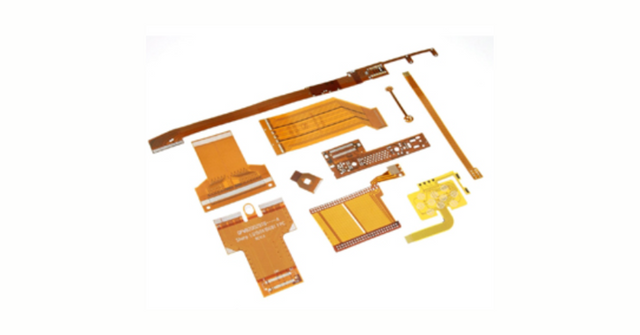Flexible Circuits: Your Competitive Advantage in Electronics
In the rapidly evolving landscape of electronics, innovation and adaptability are key to staying ahead of the competition. One technology that stands out for its versatility and efficiency is flexible circuits. These circuits, often referred to as flex circuits or flex PCBs, offer unique advantages that can transform your electronic designs and manufacturing processes. We will delve into the world of flexible circuits, exploring their benefits, applications, and why they should be your go-to solution for achieving a competitive edge in electronics.
What Are Flexible Circuits?
Flexible circuits are electronic circuits designed on flexible plastic substrates, such as polyimide or polyester films. Unlike traditional rigid printed circuit boards (PCBs), flexible circuits can bend, twist, and conform to different shapes without losing their functionality. This flexibility allows for innovative design possibilities and can significantly reduce the size and weight of electronic devices.
Advantages of Flexible Circuits
1. Design Flexibility
One of the most significant advantages of flexible circuits is their ability to conform to complex shapes and spaces. This design flexibility enables engineers to create more compact and lightweight devices. Whether it's a wearable device that needs to wrap around a wrist or an aerospace component that must fit into a tight space, flexible circuits provide the solution.
2. Durability and Reliability
Flexible circuits are highly durable and can withstand harsh environmental conditions, including extreme temperatures, moisture, and vibrations. This makes them ideal for use in industries such as automotive, aerospace, and medical devices, where reliability is crucial. Additionally, the ability to reduce the number of connectors and solder joints in a design enhances the overall reliability and longevity of the device.
3. Cost-Effective Manufacturing
Despite their advanced capabilities, flexible circuits can be cost-effective to manufacture. They often require fewer materials and assembly steps compared to traditional PCBs. The reduction in connectors and cables can also lower the overall production cost. Furthermore, their lightweight nature can lead to cost savings in shipping and handling.
4. Enhanced Performance
Flexible circuits can improve the performance of electronic devices. Their thin and lightweight nature allows for better heat dissipation, which is essential for maintaining optimal performance and extending the lifespan of components. Additionally, the ability to integrate multiple functions into a single flex circuit can reduce signal loss and improve electrical performance.

Applications of Flexible Circuits
1. Consumer Electronics
Flexible circuits are widely used in consumer electronics, including smartphones, tablets, and wearable devices. Their ability to fit into small and irregular spaces makes them ideal for creating sleek and compact designs. For example, in smartphones, flexible circuits connect various components, such as the display, battery, and sensors, ensuring seamless functionality.
2. Medical Devices
In the medical field, flexible circuits play a crucial role in the development of advanced diagnostic and therapeutic devices. They are used in medical implants, wearable health monitors, and diagnostic equipment. The flexibility and biocompatibility of these circuits make them suitable for applications that require direct contact with the human body.
3. Automotive Industry
The automotive industry relies on flexible circuits for various applications, including sensors, control systems, and infotainment systems. Their ability to withstand harsh conditions and reduce the weight of electronic systems contributes to improved fuel efficiency and overall vehicle performance. Flexible circuits also enable innovative designs in automotive lighting and displays.
4. Aerospace and Defense
In aerospace and defense, where reliability and performance are paramount, flexible circuits are used in communication systems, navigation equipment, and avionics. Their lightweight and durable nature make them ideal for use in satellites, drones, and other aerospace applications. Additionally, their ability to reduce the size and weight of electronic systems is critical in an industry where every gram counts.
Why Choose Flexible Circuits?
1. Innovation and Miniaturization
As the demand for smaller, more powerful electronic devices continues to grow, flexible circuits offer the perfect solution. Their ability to support miniaturization and integrate multiple functions into a single circuit allows for innovative product designs that stand out in the market.
2. Environmental Sustainability
Flexible circuits contribute to environmental sustainability by reducing material waste and energy consumption during manufacturing. Their lightweight nature also leads to lower transportation emissions. By choosing flexible circuits, companies can align with green initiatives and reduce their environmental footprint.
3. Competitive Advantage
Ultimately, incorporating flexible circuits into your electronic designs provides a competitive advantage. Their unique benefits, from design flexibility to cost savings and enhanced performance, enable you to create cutting-edge products that meet the demands of modern consumers and industries. By leveraging the power of flexible circuits, you can position your company at the forefront of technological innovation.
Flexible circuits are revolutionizing the electronics industry with their versatility, durability, and cost-effectiveness. Whether you're designing the next generation of consumer electronics, medical devices, automotive systems, or aerospace technology, flexible circuits offer the competitive edge you need to succeed. Embrace the future of electronics with flexible circuits and unlock the potential for innovation in your designs.